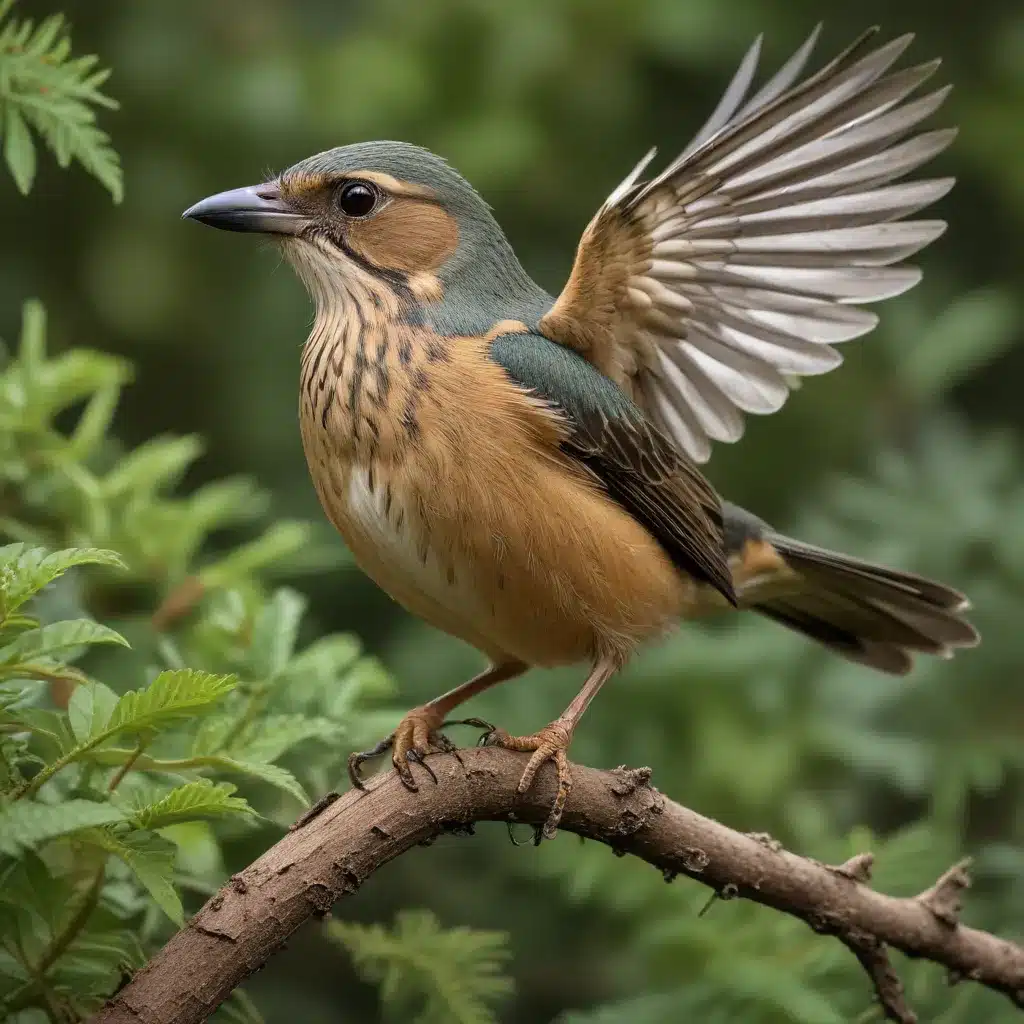
Winged Wonders: Exploring the Evolutionary Adaptations of Bird Species
Birds are truly remarkable creatures, having evolved a remarkable array of adaptations that allow them to soar, glide, and thrive in diverse environments across the globe. As an experienced avian caretaker and expert, I’m thrilled to take you on a deep dive into the fascinating world of bird evolution and the unique features that make these winged wonders so captivating.
Feather Structure and Function
At the heart of a bird’s ability to take to the skies are its remarkable feathers. These intricate structures are the product of millions of years of evolutionary refinement, each component playing a crucial role in the bird’s aerodynamic capabilities and overall survival.
The feather’s morphology, or physical structure, is a marvel of engineering. The central shaft, or rachis, supports a series of interlocking barbs and barbules that create a smooth, cohesive surface for flight. This design not only reduces air resistance but also allows for the precise control and adjustment of the wing’s shape during flight.
But feathers do more than just facilitate flight – they also play a vital role in thermoregulation. The intricate arrangement of feathers traps air, creating an insulating layer that helps birds maintain a consistent body temperature, even in the harshest of environments. This adaptation is particularly crucial for migratory species, which must contend with dramatic changes in climate during their long-distance journeys.
Avian Respiratory System
The avian respiratory system is another evolutionary marvel, designed to maximize the efficient delivery of oxygen to the body’s tissues. Unlike mammals, birds possess a unique respiratory anatomy that includes a series of air sacs connected to the lungs. This system allows for a continuous, one-way flow of air, ensuring that oxygen is continuously replenished and carbon dioxide is efficiently expelled.
This respiratory efficiency is further enhanced by the bird’s lightweight bone structure, which reduces the energetic demands of flight. By minimizing the weight of their skeletal framework, birds can conserve valuable energy, enabling them to undertake long-distance migrations and engage in prolonged aerial maneuvers.
Skeletal Adaptations for Flight
Speaking of the avian skeletal system, the unique wing anatomy of birds is a true testament to the power of evolutionary adaptation. The fusion of certain bones, the reduction of others, and the overall lightweight construction all contribute to the bird’s ability to take to the skies.
The wing’s structure, with its flexible yet sturdy primary and secondary feathers, allows for precise control over the wing’s shape and angle of attack. This, in turn, enables birds to execute a wide range of aerial maneuvers, from the graceful gliding of soaring raptors to the agile fluttering of hummingbirds.
Migratory Behaviors
One of the most awe-inspiring aspects of bird life is their remarkable migratory behaviors. Each year, billions of birds embark on long-distance journeys, often covering thousands of miles, to take advantage of seasonal changes in food availability and breeding conditions.
This feat is made possible by a variety of navigational mechanisms, including the use of celestial cues, such as the position of the sun and stars, as well as the detection of geomagnetic fields. Birds also rely on their keen senses of sight and smell to orient themselves during their epic migrations.
Fueling these arduous journeys requires significant energetic adaptations, such as the ability to rapidly accumulate fat reserves and the metabolic adjustments that enable birds to sustain their high-energy demands. The marvel of bird migration continues to captivate scientists and birdwatchers alike, revealing the remarkable resilience and adaptability of these winged wonders.
Feeding Strategies
The diverse array of beak morphologies found in the avian world is a testament to the incredible feeding adaptations that have evolved over time. From the sharp, hooked beaks of raptors to the delicate, nectar-sipping bills of hummingbirds, each beak type is perfectly suited to the bird’s preferred feeding strategy and the unique challenges of its ecological niche.
These specialized feeding adaptations allow birds to exploit a wide range of food sources, from insects and small vertebrates to nectar and seeds. The bird’s digestive physiology, including its ability to efficiently absorb nutrients and maintain a diverse gut microbiome, further enhances its ability to thrive in diverse environments.
Sensory Capabilities
The remarkable visual acuity of birds is another evolutionary marvel. Many species possess color vision that far exceeds our own, allowing them to detect subtle variations in hue and contrast that are invisible to the human eye. This enhanced visual perception, combined with the ability to detect motion with incredible precision, gives birds a distinct advantage in locating prey, identifying potential mates, and navigating their environments.
Equally impressive is the avian auditory perception. Birds are renowned for their vocalizations and communication abilities, which serve a variety of purposes, from territorial defense to courtship displays. Their hearing range often extends beyond the human spectrum, enabling them to detect and respond to a wider array of acoustic cues in their surroundings.
As we delve into the captivating world of bird evolution, it’s clear that these winged wonders have evolved a remarkable array of adaptations that allow them to thrive in diverse habitats across the globe. From the intricate structure of their feathers to the efficiency of their respiratory systems, birds have truly mastered the art of survival and flight.
If you’re as fascinated by these avian marvels as I am, I encourage you to visit Mika Birds Farm to learn more about our avian residents and the incredible adaptations that make them such unique and captivating creatures. Whether you’re an avid birdwatcher, a curious naturalist, or simply someone who appreciates the beauty and wonder of the natural world, there’s always something new to discover in the realm of our feathered friends.


